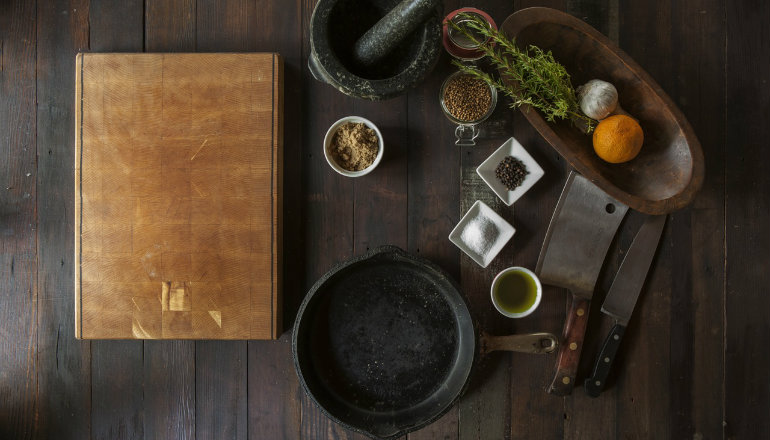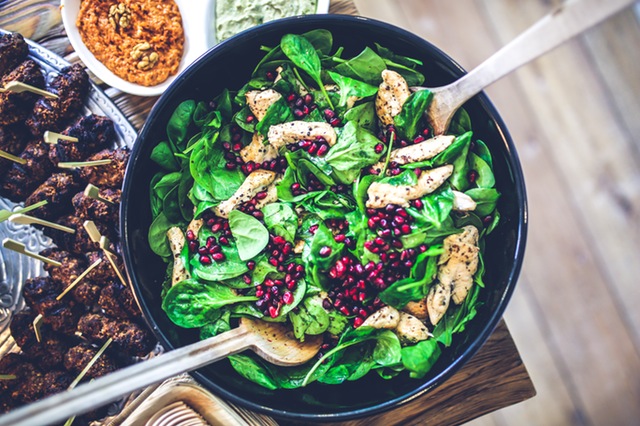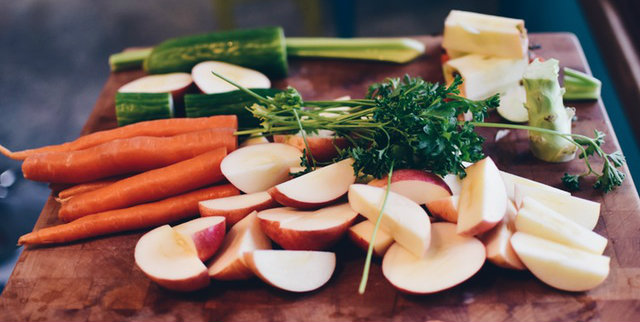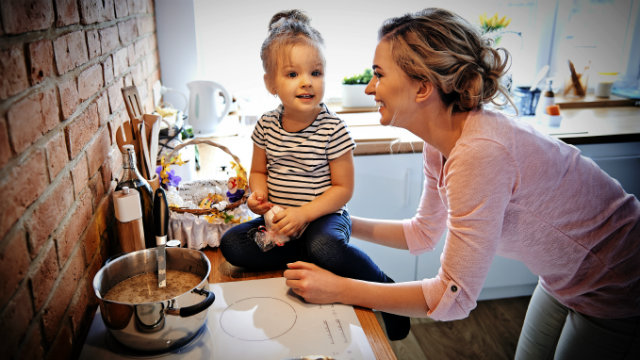
One beautiful Sunday morning this past fall I sat in the bleachers at a local park, watching my son’s baseball game. On my lap were two pieces of paper. One was blank, the other read “Sun., Mon., Tues., Wed., Thurs.” I took a deep breath and picked up my three-ring binder filled with recipes.
“What are you doing?” asked a woman sitting next to me, the mother of one of my son’s teammates.
“Oh, I’m planning the week’s meals,” I said. I paused.
“I hate it,” I added.
Not everything we do for our health and well-being is enjoyable. I love working out, I enjoy eating whole foods, and I even like meditating, but I don’t think I will ever get over my hatred for meal planning.
This doesn’t mean I’m going to stop.
Planning out the week’s meals is the foundation upon which our family’s healthy eating habits are built. Although I dislike it, I understand planning dinners is most important twenty minutes of my week.
My System for Easy Meal Planning
I’ve been meal planning consistently for about fifteen years. Over the years I’ve winnowed down the process to the essentials.
First, I take two pieces of paper from the pile of scrap paper next to my computer. On the first piece of paper I write the days of the week. This is where I’ll write each of the night’s dinners, and it goes on the fridge for the week. Posting the week’s menu also helps avoid repeated “What’s for dinner?” questions from my kids. Something about that question, especially when it’s asked at 3:00pm, sets my teeth on edge, so the list of the week’s meals avoids the entire unpleasant exchange.
The second piece of paper is my shopping list. Before I think of any meals, I visit the website of our CSA (community supported agriculture) to see what’s in our weekly box of organic, locally-grown produce. I pick up the box on Monday, but I do the grocery shopping on Sunday, so it’s important for me to know what I’m getting ahead of time. I try, as much as possible, to build my week’s meals around the CSA veggies.

We’ve been a member of our CSA for more than six years and it is the number one reason my kids, ages seven and ten, eat a wide variety of vegetables. I’ve put vegetables in front of them I’d never expect they’d eat, and slowly, over time, they’ve discovered they like bok choy, roasted cauliflower, baked beet chips, and cabbage. Many parents are afraid to try new vegetables with their kids, convinced they won’t eat them. And sure, at first, my kids gave many of these exotic vegetables the side-eye, but repeated exposure has worn down their resistance. There are still things they won’t eat, like sautéed Swiss chard and collard greens, but I don’t expect perfection.
Next, I look at the week’s schedule. If I see we’ll be home late because of one of the kid’s activities, I’ll start looking for slow cooker recipes, like this Slow-Cooker Chicken Tikka Masala from Real Simple (note: this recipe includes cream, so it will only work for those on the Kick Start level). Many slow cooker recipes can be assembled in twenty minutes or less, and result in a delicious, warm, ready-to-eat meal by the end of the day. All it takes is advance planning, which is where weekly meal planning enters the picture.
With one or two recipes in place, I start to build the week. If we’re having meat on Monday, I’ll plan fish on Tuesday. Many times what I write down isn’t even a recipe at all. It could be “salmon and broccoli,” which means I’ll grill salmon with some lemon and olive oil and roast broccoli with olive oil, salt, and pepper.
I’m also not afraid of repeating meals or recipes week after week. Things naturally shift as the seasons change, so if we have the same slow cooker pot roast recipe three weeks in a row in winter, I know I’ll move to the grill as the weather gets warmer. We are all eating a home-cooked meal Sunday through Thursday, and that in itself is a such a victory. That’s as high as the bar needs to go for me.
While I often take out a pile of cookbooks to flip through for ideas, my number one source for recipes is my three-ring binder filled with pages from magazines and websites. It’s an archaic system, but I haven’t yet found an online solution or an app that works for me. If you have a meal-planning app or site you love, please let me know in the comments!

How to Prepare Your Shopping List
The hardest part about meal planning, for me, is deciding what to eat each night. There are infinite possibilities, and studies show too many choices can be paralyzing and cause anxiety. For me, the CSA and my weekly schedule create a welcome structure and limit my choices. Often I’ll Google the vegetables on the CSA list, especially if it’s something unusual like broccoli romanesco or rutabagas, and get ideas for recipes online.
After I write down each meal, I write down the ingredients I need on the second piece of paper. This is the time to check if I have the spices I need, or to make sure I’m not almost out of olive oil. This gets trickier if I’m writing my list at a baseball game, but in that case I’ll write a question mark next to the item I’m not sure about, and hope I remember to check when I get home.
Next, I write down all the weekly essentials for the family’s breakfasts and lunches. These items repeat each week, so they are easy to remember. Finally, once the list is made, I move on to my second-most-hated task of the week: grocery shopping. I alternate between getting it done as soon as possible Sunday morning, or doing something fun in the morning, putting it off until the late afternoon, and then grumbling to myself as I wait in a checkout line ten people deep at Trader Joe’s.
Why This Is the Most Important 20 Minutes of Your Week
If I hate doing these tasks so much, why do I continue?
I continue because as much as I hate meal planning and grocery shopping, I love having a week’s worth of meals planned out in advance. I love that on Wednesday at 5:00pm, instead of thinking with dread, “What am I going to make for dinner?” I consult my list and pull out the ingredients. I love the discipline the list inspires, which leads to a week’s worth of healthy eating for the entire family, every week.

My reward for a week’s worth of planning and cooking comes on Friday. Usually, at that point, I will have accumulated a hodge-podge of leftovers. Unless we have plans, Friday night dinner is either leftovers or, if no leftovers are to be found, eggs and any vegetables I can find hanging around. Saturday night the kitchen is closed, unless we’re having a dinner party.
If dinners are a nightly source of stress for you, get out a piece of paper, a few cookbooks, and start meal planning!



































